College Sports
Why SEC reversed course on AQ
Headed into the start of SEC spring meetings, the Big Ten believed it had a partner in its push to transform the College Football Playoff into something more akin to the NFL. The Big Ten and SEC have grown significantly closer over the last year, having orchestrated a takeover of the College Football Playoff that […]
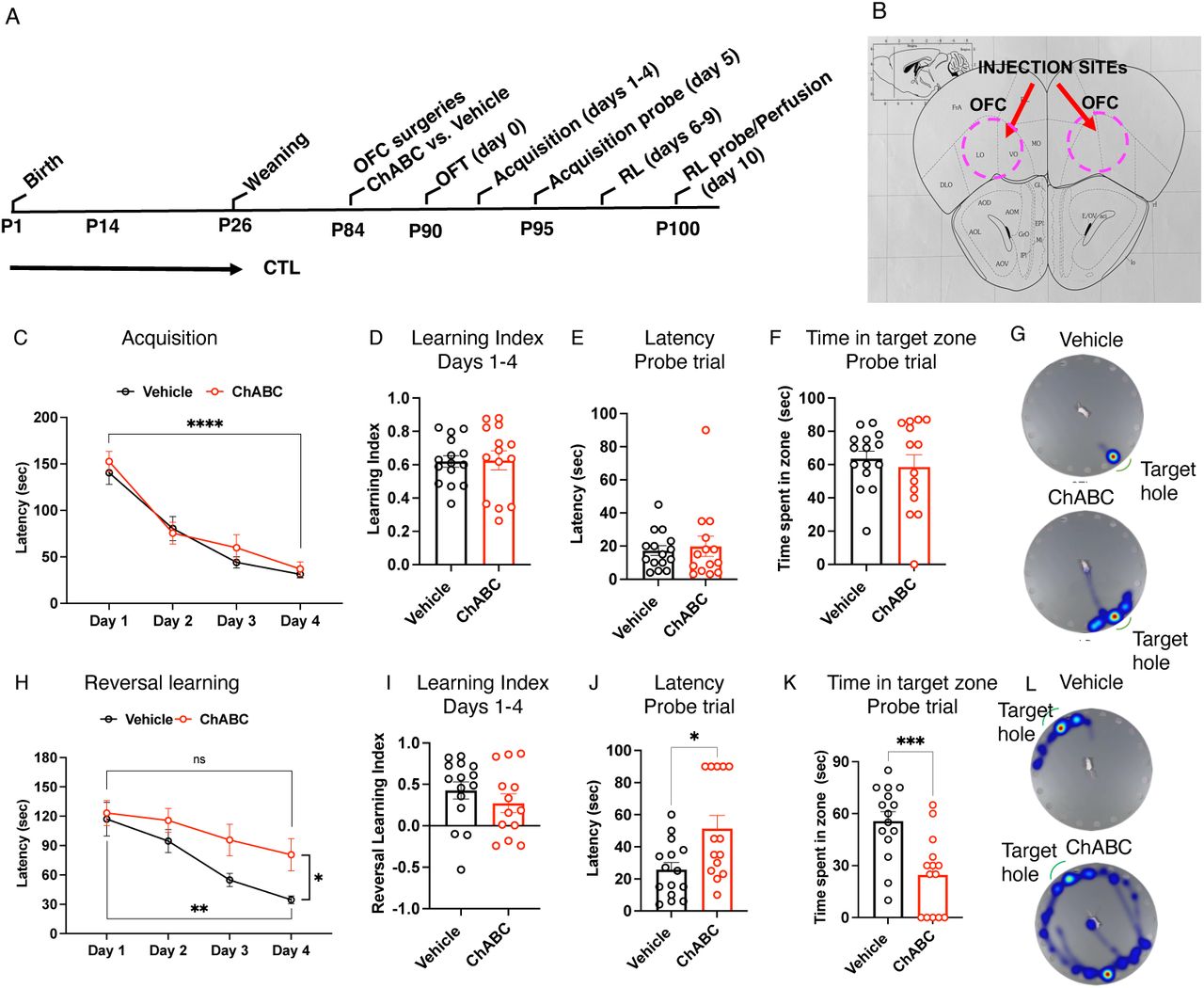

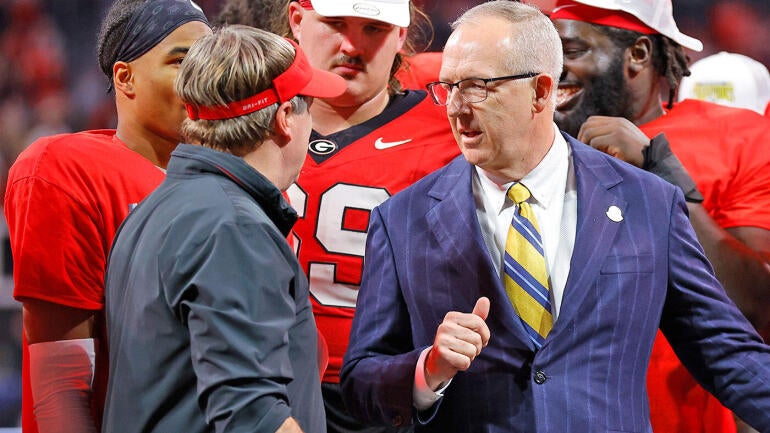
Headed into the start of SEC spring meetings, the Big Ten believed it had a partner in its push to transform the College Football Playoff into something more akin to the NFL.
The Big Ten and SEC have grown significantly closer over the last year, having orchestrated a takeover of the College Football Playoff that gives them say over whether and how the format will change for 2026 and beyond.
The two conferences strengthened the bond with historic conference meetups — first in Nashville in October 2024 and then in New Orleans in February. At those meetings, the Big Ten’s preference to move to more automatic qualifiers — four each for the Big Ten and SEC, two each for the ACC and Big 12 — began to resonate with an SEC contingent that had previously resisted.
Those involved in the discussions and participants in the meetings say once Big Ten leaders laid out the reasoning for a move to more automatic qualifiers — chief among them taking away power from a perceived inconsistent selection committee process and allowing for better non-conference scheduling — it gained traction within the SEC. The Big Ten believed a move to more automatic bids would lessen the selection committee “conflicting itself week-to-week,” according to one source familiar with the discussions, and allow for consistency that it didn’t think was possible for a 13-person group that changed its membership year-over-year.
“Make it about how you compete against your conference and take out any sort of perceived bias or politicking and campaigning and let it play out how each conference thinks is best for them,” is how one Big Ten source explained the pitch.
Still undecided, SEC holds the key to College Football Playoff as 5+11 format gains steam
Brandon Marcello
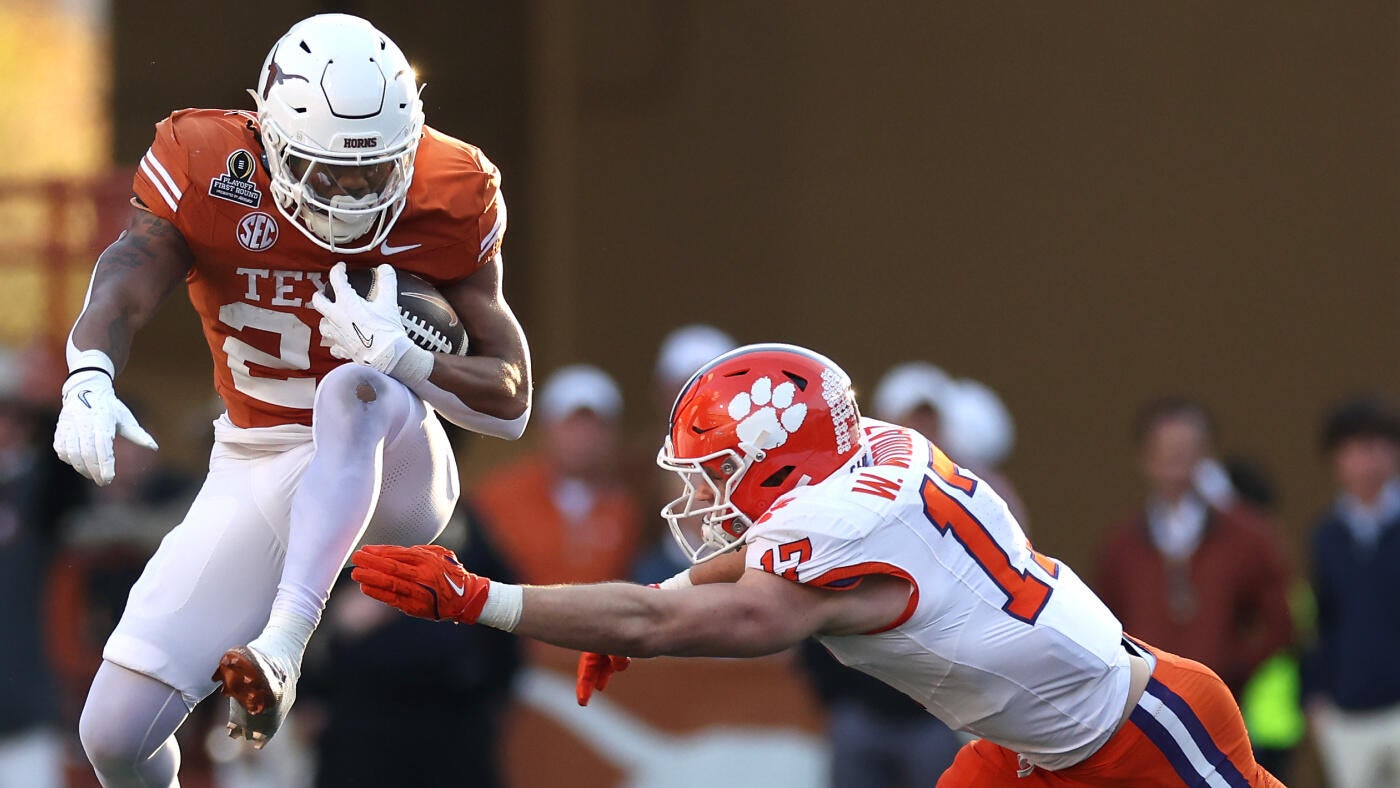
It helped that the Big Ten caught the SEC in a perfect storm during that February meeting after the conference experienced three schools (Alabama, Ole Miss and South Carolina) just miss the playoff cut in a process SEC leaders felt didn’t properly weigh the challenge of playing in the conference. The idea of dramatically lessening the selection committee’s power didn’t sound so bad now after the SEC only got three teams into the first year of the 12-team CFP.
Big Ten sources described those shared meetings with the SEC, which featured both commissioners and athletic directors from all member schools, as “critical” in garnering support for a move to a 16-team playoff with more automatic qualifiers. At Big Ten meetings in late May in California, multiple Big Ten sources were bullish about where things stood between the two conferences in their push for playoff expansion. The concern wasn’t what the SEC would do but instead trying to build a consensus with the ACC and Big 12, which had both opposed the 4-4-2-2-1-3 model despite a firmly held belief that they didn’t need either to ultimately achieve their goals.
The key, then and now, was the SEC.
And as the SEC kicked off its annual meetings down in Sandestin, Florida, last week, there was no reason for concern. SEC commissioner Greg Sankey was careful with his wording in describing the idea but didn’t exactly hide his support of it, either. He said the SEC was “interested but not committed,” a typical Sankey move to nod at what he wanted but give himself cover.
Yet as the week at the beach closed, the SEC was trending away from the 4-4-2-2-1-3 model and instead was rallying around the Big 12’s preferred 5 + 11 model that featured the top five-ranked conference champions receiving automatic bids and the other 11 going to the top ranked at-large teams. It was a stunning reversal that caught multiple Big Ten sources off guard and could set up a potentially fascinating heavyweight battle between the two most powerful conferences if the SEC becomes entrenched on the 5+11 idea.
How did we get there? It begins with a powerful group that is often overlooked in these discussions.
SEC coaches forcefully against AQs, 9 conference games
Six of the 10 highest-paid football coaches in America reside in the SEC, including the game’s highest-paid coach, Georgia‘s Kirby Smart. National championship-winning coaches like Smart are almost demigods in their community, revered for their success on Saturdays and their ability to bring in millions of dollars in revenue when everything is going well.
But when it comes time to making big decisions that could shape their everyday reality, even the powerful, outspoken coaches like Smart and Ole Miss’ Lane Kiffin rarely get what they want. Just look at Smart’s impassioned speech about the transfer portal last week and why nothing has changed despite overwhelming support at the FBS head coach level.
What one must remember is that what’s most important to a football coach could be just one of the many issues their athletic director is dealing with at any given time. Go up another level and think about everything a university president or chancellor must contend with daily. The higher up the food chain you go, the more attractive extra revenue that an expanded CFP and a move to nine SEC conference games might look.
This time was different, though.
The SEC football coaches coming out so strongly against AQs, both publicly and privately, caught SEC leaders by surprise, according to multiple sources. The joint conversation between athletic directors and football coaches became heated at times, as some ADs, banking on the extra $5 million or so in revenue a ninth SEC game would bring, became frustrated over the tides turning against their preferred outcomes. The majority of the coaches vehemently opposed the idea of a play-in weekend, believing it would diminish the importance of the SEC Championship Game. The play-in playoff concept, a key component of Big Ten commissioner Tony Petitti’s playoff plan, is another potentially sizable source of new revenue that some ADs would like to get their hands on.
“Having football coaches in the room was really good,” Mississippi State AD Zac Selmon told CBS Sports. “We’re considering all options and what’s best for our institutions and the SEC.”
Selmon said his position on automatic qualifiers “evolved a lot” after the joint meetings with the Big Ten but that he still wrestled with whether that was the best path for the SEC, a notion only amplified down in Sandestin after discussing with his colleagues.
“I grew up in sports, and if you want to win a championship, you have to go earn it, and I still think that’s exactly how it is in the SEC,” Selmon said. “If you get into the CFP, you’ve earned your way there, and you should.
“In some years, we could have a model where there’s seven SEC teams in the expanded CFP. Is that good for the game? I don’t know, but it shows the strength of our league. There’s still work to be done on what options, but I always feel comfort knowing Commissioner Sankey has done an unbelievable job carrying the load. The same for us at Mississippi State with Mark Keenum, the chair of the (CFP) Board of Managers. I still think there’s work to be done on the entire ecosystem just because of the disparity in our league is a gauntlet.”
How will selection process change?
From the start of the SEC’s week on the Gulf Coast, it felt like a targeted attack on the current CFP selection process.
Multiple coaches came out against a process that led to more Big Ten (4) than SEC (3) teams in the playoff.
“There’s no outcry, saying it’s unfair when the SEC gets 13 of 16 teams in (the NCAA) basketball tournament by using RPI,” Smart said. “I have a hard time thinking Ole Miss, South Carolina and Alabama were not part of the best teams in the country.”
Lane Kiffin, who advocated for simply taking the 16 best teams and getting rid of automatic bids altogether, wanted the selection process tweaked.
“Somehow, the formula of how they figure out the teams has to change,” Kiffin said. “I’m not just saying that because we lost three games and didn’t make it; I’m saying that because other sports do a much better job of figuring out the quality of the team over just the losses, figuring out the quality of wins that they have, their strength of schedule that they play.”
When pressed on what specifically he’d like to see done to emphasize those things, including from an analytics or formula standpoint, Kiffin admitted he didn’t really have an answer.
“You got to use some of the indexes,” he said. “I’m not going to pretend I understand them all and which ones are the best, but I know other sports have figured that out better than us.”
Therein lies part of the problem moving forward. The SEC doesn’t like how the selection committee handled last year’s playoff field. Guess what? The Big Ten has similar concerns, which is why it is trying to deemphasize the committee’s impact with the introduction of more automatic qualifiers. In the Big Ten’s plan, the committee would primarily focus on seeding. It would only have to select three at-large teams — if it expands to 16 teams — rather than the seven teams it currently picks.
Conversely, if a 5 +11 model is adopted, it’d give the committee more power — and put even more pressure to get it right — in picking 11 of the field’s teams.
The limited amount of data points available in football makes it challenging to come up with college football’s version of NET or RPI. Still, it is clear that changes can — and likely will — be made to an ambiguous process to find the best teams that doesn’t officially take strength of schedule into account. As former Big East commissioner Mike Tranghese, a member of the inaugural CFP selection committee, told CBS Sports in December: “They said, ‘We want to get the best teams.’ But no one told us how to find the best teams.”
Florida AD Scott Stricklin, another former member of the selection committee, was even more forceful in his rebuke of a system he once willingly participated in, saying, “A committee is not ideal to choose a postseason. I question whether it is appropriate for college football.”
Selmon wants “more clearly defined metrics” and to make the selection process less subjective. He doesn’t know the exact formula to fix the problems but is confident it can be done.
“I can pick up my phone and have food delivered here in five minutes. I could probably buy a house in about 10 minutes. We’ve got super computers that can look at things that are going on in Vegas with odds. They can be pretty dialed in,” Selmon said. “So I think we need some more objective metrics to say this is what the pathway looks like before we can fully get to a system everybody feels good about regardless of what seat you’re sitting in, what league you’re in, and think this is for the good of college football.”
At the conclusion of the SEC spring meetings, the conference handed out a seven-page packet entitled, “A Regular Season Gauntlet,” that highlighted “no other conference has a regular season as grueling as the SEC’s.” Within the packet, the SEC pointed out different metrics used, whether the metrics were objective or predictive and where the conference ranked. The intent was obvious: The SEC, using a variety of metrics, believes it has been the clear best conference over the last decade and that more of those metrics need to be factored into the selection process.
As Sankey put it,” “I do think there’s a need for change. How do you explain some of the decisions that have been made?”
Imagn Images
What now?
On Monday, Sankey reiterated his long-held belief that the SEC doesn’t need automatic qualifiers. Appearing on the “Dan Patrick Show,” the SEC commissioner, who has been the unwitting face of the automatic qualifiers debate, made clear that’s not his preference.
“I’d give no allocations,” Sankey said. “This whole 5-7 thing that exists now, I’d just make it the 12 best teams. I was clear on that. When we get into rooms, we make political compromises, if you will.”
Sankey and the other conference commissioners are expected to have a call Tuesday to further discuss the latest CFP discussions. They’ll meet in person on June 18 in Asheville, North Carolina. Sankey told the SEC presidents and chancellors last week it was important to collaborate with the other conferences and that the SEC couldn’t “bulldog” a format on the others, as one SEC president told CBS Sports.
A week ago, expansion to 16 teams with multiple AQs per power conference felt increasingly like a foregone conclusion. With it came a possible Big Ten-SEC scheduling alliance and a play-in weekend where the conferences could create additional must-see television programming.
Now, the 5 + 11 model has more steam than ever. It seems more and more doubtful that the SEC will move to a nine-game conference schedule in 2026. (The Big Ten, according to Yahoo Sports, has already voiced private displeasure over moving to 5+11 if the SEC sticks to eight conference games.) SEC football coaches harshly rejected the play-in championship weekend idea.
Will the SEC maintain this stance and throw cold water on its burgeoning relationship with the Big Ten? Or, as time passes and decisions get made without coaches in the room, will the SEC eventually make its way back to a model that guarantees it four spots in the playoff?
Only time will tell, but the industry is already grappling with the aftershocks of the SEC’s week in Sandestin that could be the most impactful spring meetings in a long time.
College Sports
Five-star OT Felix Ojo commits to Texas Tech, lands $5M+ deal
Eli LedermanJul 4, 2025, 02:17 PM ET Close Eli Lederman covers college football and recruiting for ESPN.com. He joined ESPN in 2024 after covering the University of Oklahoma for Sellout Crowd and the Tulsa World. Five-star offensive tackle Felix Ojo, No. 20 in the 2026 ESPN 300, committed to Texas Tech on Friday upon signing […]
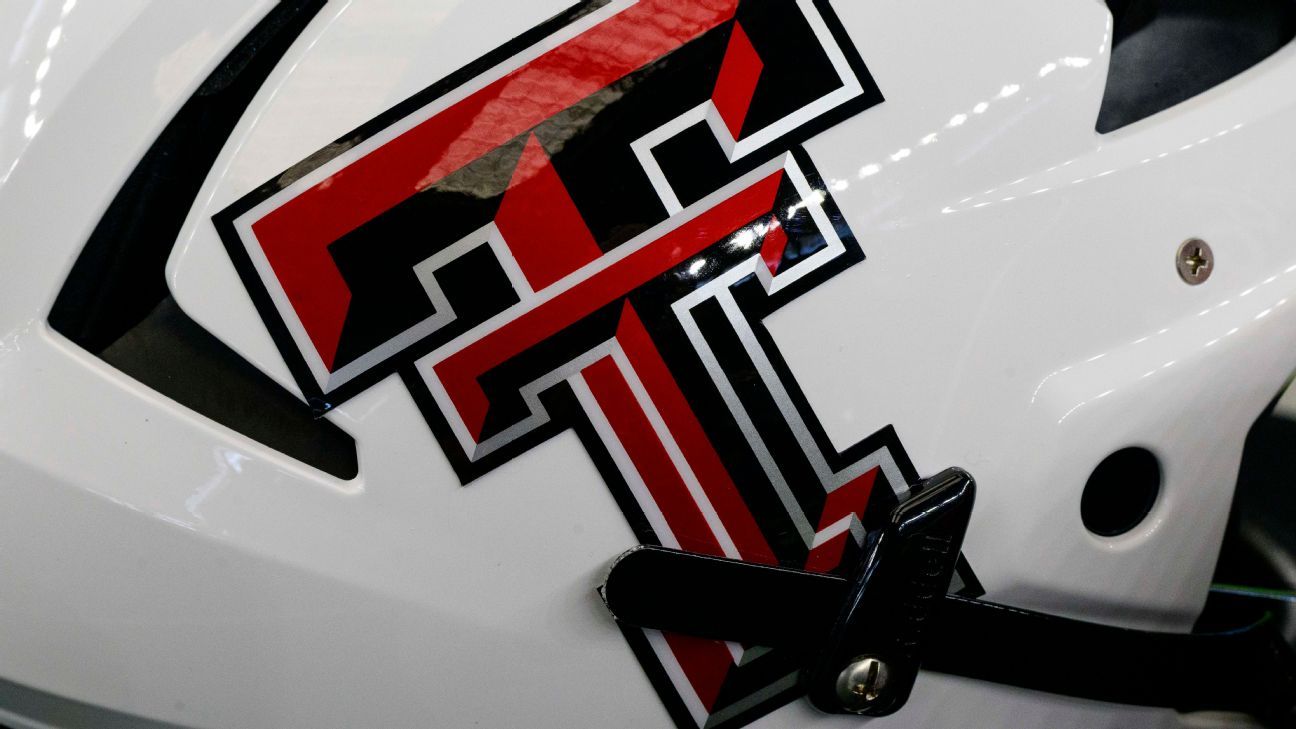
Five-star offensive tackle Felix Ojo, No. 20 in the 2026 ESPN 300, committed to Texas Tech on Friday upon signing a historic, seven-figure revenue share contract with the Red Raiders, his agent Derrick Shelby of Prestige Management told ESPN.
Ojo, a 6-foot-7, 285-pound prospect from Mansfield, Texas, is ESPN’s No. 4 offensive tackle and second-ranked recruit from the state of Texas in the 2026 class. He chose Texas Tech over Florida, Michigan, Ohio State and Texas following a slate of official visits this spring. Ojo will arrive as the program’s highest-ranked addition since ESPN began ranking high school prospects in the 2006 recruiting cycle.
Per Shelby, Ojo is set to join Texas Tech on a fully guaranteed three-year, $5.1 million contract.
The deal is believed to be one of the largest fully guaranteed revenue-share agreements in college football history under the recently approved federal settlement that allows college programs to pay their athletes directly. Ojo’s deal now rivals the lucrative multiyear package that top-ranked 2026 offensive tackle Jackson Cantwell secured with Miami earlier this year, which sources told ESPN will earn the nation’s No. 3 overall prospect more than $2 million annually with incentives.
“Football is a brutal sport, and athletes are not able to play professionally until their graduating class has been in college three years,” Shelby told ESPN. “It was important to be able to secure Felix Ojo’s future and give him and his family some security as he continues to develop into a first-round NFL draft pick.”
Ojo’s agreement with Texas Tech marks the school’s latest move in a string of significant expenditures over the past year.
ESPN’s Max Olson reported in February that the Red Raiders spent more than $10 million on 17 new players in the winter transfer portal window last December. All told, Texas Tech made 21 portal additions while assembling the nation’s second-ranked transfer class this offseason.
The Red Raiders also made waves last summer when the Matador Club, the school’s NIL collection, helped the softball program land transfer phenom NiJaree Canady from Stanford on a one-year, $1,050,024 deal. Canady, who is also represented by Shelby, signed another seven-figure contract with the Matador Club last month after leading the Red Raiders to their first Women’s College World Series appearance and a national runner-up finish in her debut season with the program.
A multiyear starter at Texas’ Lake Ridge High School and one of the nation’s top offensive line prospects, Ojo marks a seismic recruiting win for Texas Tech head coach Joey McGuire and the Red Raiders.
Ojo will join Texas Tech in 2026 as the program’s first five-star signee since wide receiver Micah Hudson in 2024.
Ojo’s list of official visits this spring included stops at Colorado, Florida, Michigan, Ohio State, Ole Miss, Utah and Texas along with the Red Raiders prior to his pledge. Sources told ESPN that Texas and Utah were among the programs that offered Ojo the most substantial revenue-share contracts in the final stages of his recruitment.
Ojo represents Texas Tech’s first ESPN 300 addition among 18 prospects committed to the program in the 2026 cycle, a group that includes 13 in-state pledges. He lands as a cornerstone commit in a Red Raiders offensive line class that also features a pair of spring pledges in three-star offensive guard Jerald Mays and offensive tackle Jacob Crow.
College Sports
2025 SJC Men’s Soccer Schedule Preview
Story Links STANDISH, Maine – The 2025 Saint Joseph’s College men’s soccer schedule has been announced. With 16 regular-season tilts on the docket, the Royal Blue will open the campaign at home on Friday, August 29th, with a 4:00 PM match-up against NEWMAC foe Wheaton College and conclude the regular season with […]
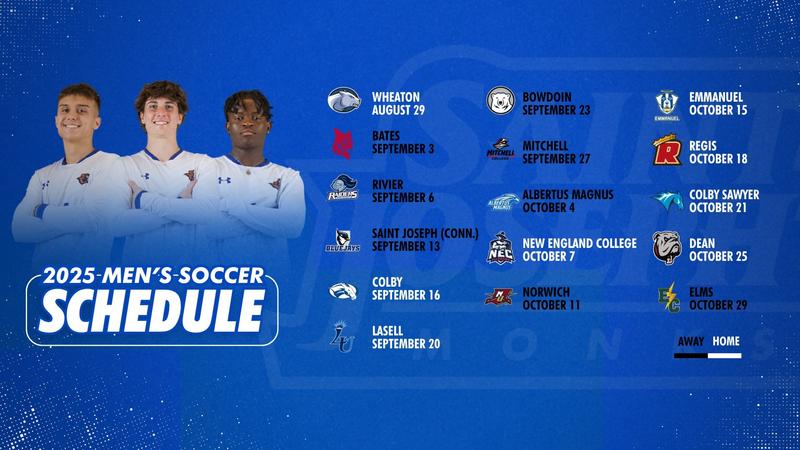
STANDISH, Maine – The 2025 Saint Joseph’s College men’s soccer schedule has been announced. With 16 regular-season tilts on the docket, the Royal Blue will open the campaign at home on Friday, August 29th, with a 4:00 PM match-up against NEWMAC foe Wheaton College and conclude the regular season with a Great Northeast Athletic Conference (GNAC) contest at Elms College on October 29th.
Led by seventh-year Head Coach Will Pike ’11, the Monks are slated to play 12 GNAC games and four non-conference match-ups this fall. In addition to the opener versus Wheaton, Saint Joseph’s will face all three of Maine’s NESCAC programs—Bates (Sep. 3), Colby (Sep. 16), and Bowdoin (Sep. 23)—in a challenging non-conference slate.
Saint Joseph’s begins GNAC play on Saturday, September 6th, with a 2:00 PM game at Rivier University and, following the September 23rd tilt at Bowdoin, will close the regular season with nine consecutive conference contests.
The 2025 GNAC Tournament begins with quarterfinal action on November 1st and continues with the semifinal and championship rounds on November 4th and 8th, respectively. The tournament champion earns the conference’s automatic berth into the NCAA Division III Tournament, which begins on November 15th.
In 2024, the Monks finished with an 8-8-3 overall record and a 7-5-2 mark in GNAC play. As the #5 seed in the GNAC Tournament, Saint Joseph’s traveled to #4 Emmanuel College for a quarterfinal match up on November 2nd. After a 1-1 draw through 110 minutes of regulation and overtime, the Monks were eliminated in penalty kicks—marking the program’s first first-round exit since 2015.
Games to Watch:
August 29 vs. Wheaton College – Saint Joseph’s opens the season with a new-look roster and hopes of avenging a 5-1 loss to the Lyons last fall in Norton, Mass. The Monks are 0-5-1 all-time against Wheaton.
September 13 at University of Saint Joseph – The Monks face the reigning GNAC Champion in their second conference match of the season. The Blue Jays defeated SJC 3-1 last year in Standish.
October 25 vs. Emmanuel College – Saint Joseph’s seeks redemption following a 2024 GNAC Tournament exit at the hands of the Saints. The contest is the first of four consecutive home games in a 10-day span to close the regular season.

| CLOSER LOOK AT 2025 SCHEDULE/OPPONENTS: |
|
|---|---|
| Total Games: | 16 |
| Home/Away/Neutral: | 8 / 8 / 0 |
| Opponents’ Overall Record in 2024: | 104-133-55 (.450) |
| Monks’ All-Time Record vs. 2025 Foes: | 105-68-13 (.599) |
| Longest Current Winning Streak vs. 2025 Opponent: | 16 – Rivier |
| Longest Current Losing Streak vs. 2025 Opponent: | 12 – Bates |
| 2024 NCAA Tournament Teams on 2025 Schedule: | Bowdoin, Saint Joseph (CT) |
| First Time Opponent(s) on 2025 Schedule: | None |
| 2025 GNAC Tournament Dates: | Nov 1 (Quarterfinal), Nov 4 (Semifinal), Nov 8 (Championship) |
| 2025 NCAA Tournament Dates: | Nov 15 – Dec 7 |
College Sports
Drew Fortescue Makes The Decision To Return To Boston College As He Feels It’s Best For His Development
Peter Carr/The Journal News / USA TODAY NETWORK via Imagn Images One of the big questions going into the New York Rangers’ development camp was the future of Drew Fortescue. Fortescue is one of the Rangers’ most promising defensive, prospects and he’s shown a lot of potential through his two years at Boston College. Advertisement […]
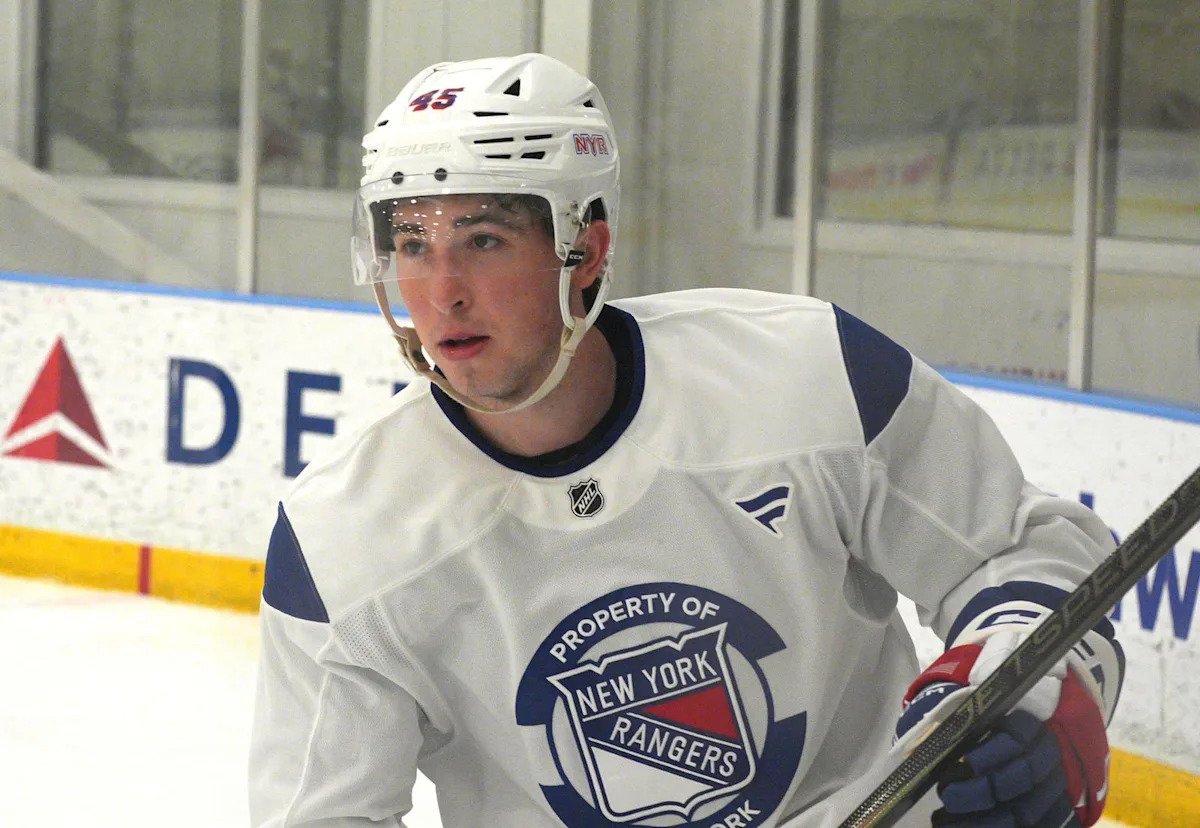

Peter Carr/The Journal News / USA TODAY NETWORK via Imagn Images
One of the big questions going into the New York Rangers’ development camp was the future of Drew Fortescue.
Fortescue is one of the Rangers’ most promising defensive, prospects and he’s shown a lot of potential through his two years at Boston College.
Advertisement
Instead of making the jump to professional hockey, where he would likely play for the Hartford Wolf Pack of the American Hockey League, Fortescue will return to Boston College for his junior year.
The 20-year-old feels that playing another season at the collegiate level will be best for his overall development.
“I talked to the front office a little bit and kind of just think that’s best for my development going forward,” Fortescue said about his decision to return to Boston College. “Right now I’m just focused on getting bigger and stronger. My plan is to continue to work on that and be ready for the following year.”

The Rangers’ ‘Busy And Exciting’ Offseason Has Been A Grand Success So Far
The Rangers’ ‘Busy And Exciting’ Offseason Has Been A Grand Success So Far New York
Advertisement
Rangers president and general manager Chris Drury accomplished everything he wanted to do during the 2025 offseason.
The Rangers selected Fortescue in the third round of the 2023 NHL Draft.
This past season playing at Boston College with fellow Rangers prospect Gabe Perreault, Fortescue recorded 11 points in 36 games.
College Sports
College sports enter a “Wild West” era as House settlement rules kick in
This week, elite college sports officially entered a new era, Detroit learned it’s getting a new pro basketball team, and the Pistons made moves to replace a player facing an investigation. Michigan Public sports commentator John U. Bacon joined Morning Edition host Doug Tribou to discuss that and more sports news. Doug Tribou: The House settlement […]

This week, elite college sports officially entered a new era, Detroit learned it’s getting a new pro basketball team, and the Pistons made moves to replace a player facing an investigation.
Michigan Public sports commentator John U. Bacon joined Morning Edition host Doug Tribou to discuss that and more sports news.
Doug Tribou: The House settlement – the legal agreement that creates dramatic changes in college sports – officially kicked in this week – on July 1st. Now colleges can pay their athletes directly, roster limits have changed, and all athletes can be offered a scholarship. What will you be keeping an eye on in the early stages under the new rules?
John U. Bacon: Well, it’s Wild West now, so heads up. The first thing is just a ton of money sloshing around. Now universities have a $20.5-million salary cap, if you will. And they’re going to pay back pay to former athletes of $2.8 billion. What does that mean? Michigan and Michigan State are going to pay it and [Eastern Michigan University], and [Central Michigan University] and Western Michigan are going to have a hard time funding their programs, frankly. So, you’re going to see some programs at the Big Ten level and down, eliminating non-revenue sports.
But that’s not all, Doug. Check this one out. They’re also going to have NIL monitoring of deals — all deals more than $600, which is virtually all of them — to determine what the fair market value is to make sure you’re not overpaying name, image, likeness for your quarterback. What is the fair market value of a Van Gogh painting? Whatever the guy just paid, that’s what it is. So, that’s going to be impossible.
And then, of course, you’ve got the question of, “Are they student athletes or employees?” Now the NCAA still wants to say they’re student-athletes, but I’m willing to bet that the IRS and the courts will say otherwise. So heads up student athletes, you’re about to get taxed.
DT: And there’s all of this carrying over beyond the revenue sports, as well. Beyond the football and basketball teams, you’ve got these dollars being divvied up and trying to cover the [athletes in] non-revenue sports. And the name, image, likeness enforcement plays in there at some level. It’s very complicated.
JUB: What does it all mean? Nobody knows anything. Trust me on this one. Don’t worry about following it. It’s impossible.
But I want to throw this one out there. The NCAA has also abdicated most of its role as rule enforcer. Which is why it was created in 1905. That’s been left to the College Sports Commission, a newly created thing, and the conferences. They’re not going to do much.
So they used to be the sheriffs, the NCAA. Then they became the sheriff and saloon keeper, and now they’re dropping sheriff to focus on saloon keeping, because it turns out that’s a lot more lucrative. There you go.
DT: [Laughs] I’ll try to process that analogy…
JUB: [Laughs] At the bar later.
DT: All right. Let’s turn to the NBA. Malik Beasley set a Pistons’ record for three-pointers last season and helped the team during its historic turnaround. But now he’s the subject of a federal investigation into unusual betting action around a game when he played for Milwaukee in 2024. There are also many reports Beasley has had significant debt issues. He has not been charged – so it’s not fully clear where the investigation’s headed.
In the meantime, Beasley is a free agent and Detroit seems to be moving on and filling in the gaps with some players with local ties…
JUB: And indeed, they do. A couple of things: One, as far as Beasley goes, I can’t say, you can’t say, what’s happened there. But I can say, with so much legalized sports gambling swimming around all these sports, even the college sports, these things are bound to happen more, not less, in the future.
But in the meantime, the Pistons pick up Duncan Robinson, who was a transfer from Williams College, Division III, to Division I Michigan, and now is one of the best three-point shooters in the [NBA]. And Caris LeVert, another Michigan alum who, by the way, was in my class ten years ago when I was earning $10,000 to teach him. And he’s going to earn $29 million for two years. So kids, consider your career path.
The WNBA plans to add a new team in Detroit in 2029. The city was previously home to the Detroit Shock. The team moved away after the 2009 season.
DT: [Laughs] The WNBA is coming back to Detroit. The league announced this week that it’s adding to earlier expansion plans. Detroit’s new franchise will start playing in 2029.
Detroit was previously home to the Shock. The Shock won three WNBA titles in the early 2000s, but after the 2009 season they became the Tulsa Shock and are now the Dallas Wings. What do you make of the news that Detroit will soon have a team again?
JUB: Well, good for Detroit, good for the WNBA. Detroit is a great basketball town and good for Tom Gores, who, of course, owns the Detroit Pistons and is now one of the lead investors on this team as well.
It’s all because [of], frankly, Caitlin Clark. I’ve heard experts say that she is worth $1 billion to this league. So, now is the time to do it. I’ve heard others say that the league is a bubble that’s going to burst, and both could be true. I have no idea. But the timing is good to hop in this pool, I would say. And Gores is doing it.
DT: John, the Tigers remain firmly in first place in the American League Central Division. They’re having a special season so far and that’s in no small part because of pitcher Tarik Skubal. He’s got 10 wins and just 2 losses this season and was absolutely dominant on Sunday against the Twins. Can you give us an idea of how great he’s been so far?
JUB: Well how about this. The greatest in my lifetime so far. I’ve got to go back to Denny McLain, who won 31 games in 1968 — the last major league pitcher to do that, by the way. But I was four and I don’t recall it. So Skubal you’re it, man. Now it’s up to the Tigers to resign him before they lose this singular talent.
Editor’s notes: Some quotes in this article have been edited for length and clarity. You can hear the full conversation near the top of the page.
The University of Michigan holds Michigan Public’s broadcast license.
College Sports
2025 SJC Men's Soccer Schedule Preview
Story Links STANDISH, Maine – The 2025 Saint Joseph’s College men’s soccer schedule has been announced. With 16 regular-season tilts on the docket, the Royal Blue will open the campaign at home on Friday, August 29th, with a 4:00 PM match-up against NEWMAC foe Wheaton College and conclude the regular season with a Great Northeast […]


STANDISH, Maine – The 2025 Saint Joseph’s College men’s soccer schedule has been announced. With 16 regular-season tilts on the docket, the Royal Blue will open the campaign at home on Friday, August 29th, with a 4:00 PM match-up against NEWMAC foe Wheaton College and conclude the regular season with a Great Northeast Athletic Conference (GNAC) contest at Elms College on October 29th.
Led by seventh-year Head Coach Will Pike ’11, the Monks are slated to play 12 GNAC games and four non-conference match-ups this fall. In addition to the opener versus Wheaton, Saint Joseph’s will face all three of Maine’s NESCAC programs—Bates (Sep. 3), Colby (Sep. 16), and Bowdoin (Sep. 23)—in a challenging non-conference slate.
Saint Joseph’s begins GNAC play on Saturday, September 6th, with a 2:00 PM game at Rivier University and, following the September 23rd tilt at Bowdoin, will close the regular season with nine consecutive conference contests.
The 2025 GNAC Tournament begins with quarterfinal action on November 1st and continues with the semifinal and championship rounds on November 4th and 8th, respectively. The tournament champion earns the conference’s automatic berth into the NCAA Division III Tournament, which begins on November 15th.
In 2024, the Monks finished with an 8-8-3 overall record and a 7-5-2 mark in GNAC play. As the #5 seed in the GNAC Tournament, Saint Joseph’s traveled to #4 Emmanuel College for a quarterfinal match up on November 2nd. After a 1-1 draw through 110 minutes of regulation and overtime, the Monks were eliminated in penalty kicks—marking the program’s first first-round exit since 2015.
Games to Watch:
August 29 vs. Wheaton College – Saint Joseph’s opens the season with a new-look roster and hopes of avenging a 5-1 loss to the Lyons last fall in Norton, Mass. The Monks are 0-5-1 all-time against Wheaton.
September 13 at University of Saint Joseph – The Monks face the reigning GNAC Champion in their second conference match of the season. The Blue Jays defeated SJC 3-1 last year in Standish.
October 25 vs. Emmanuel College – Saint Joseph’s seeks redemption following a 2024 GNAC Tournament exit at the hands of the Saints. The contest is the first of four consecutive home games in a 10-day span to close the regular season.

| CLOSER LOOK AT 2025 SCHEDULE/OPPONENTS: | |
|---|---|
| Total Games: | 16 |
| Home/Away/Neutral: | 8 / 8 / 0 |
| Opponents’ Overall Record in 2024: | 104-133-55 (.450) |
| Monks’ All-Time Record vs. 2025 Foes: | 105-68-13 (.599) |
| Longest Current Winning Streak vs. 2025 Opponent: | 16 – Rivier |
| Longest Current Losing Streak vs. 2025 Opponent: | 12 – Bates |
| 2024 NCAA Tournament Teams on 2025 Schedule: | Bowdoin, Saint Joseph (CT) |
| First Time Opponent(s) on 2025 Schedule: | None |
| 2025 GNAC Tournament Dates: | Nov 1 (Quarterfinal), Nov 4 (Semifinal), Nov 8 (Championship) |
| 2025 NCAA Tournament Dates: | Nov 15 – Dec 7 |
College Sports
Urban Meyer thinks Florida State Seminoles football may be in serious trouble
The Florida State Seminoles have come under fire recently as the entire college football world ushers in a new NIL era of revenue sharing. As of July 1, schools across the country have adopted a new model that allows them to negotiate and pay players directly, a practice previously handled through third-party collectives and endorsements. […]

The Florida State Seminoles have come under fire recently as the entire college football world ushers in a new NIL era of revenue sharing. As of July 1, schools across the country have adopted a new model that allows them to negotiate and pay players directly, a practice previously handled through third-party collectives and endorsements.
The problem described by one Big 10 general manager as “not normal” arose from the generally “aggressive” fine print that Florida State has included in its preliminary player contracts. For instance, an athlete can be charged up to $2,500 for losing equipment or face a total contract termination due to injury, according to Chris Hummer of CBS Sports.
While the Seminoles attempt to maneuver in the new NIL landscape, multiple figureheads in the college football world have spoken out. The Triple-Option host Mark Ingram has openly criticized the specific language used in the contracts, saying it could deter Florida State from landing some of the nation’s top talent.
“Players aren’t going to go there because, for one, this contract gives Florida State way too much control over your future and your money. It exposes you to risk, injury, discipline, loss of leverage,” Ingram said. “All that. So, if you’re a top player and you’ve got Florida State as your top university and they give you this, I’m sure there’s another university that is going to give you better conditions and treat you like a partner, not an asset.”
Sportscaster and former head coach Urban Meyer also viewed the contract details with hesitation, stating that the power struggle approaching between universities and student-athletes is unforeseen and will hurt recruiting. He went on to express skepticism about the entire ordeal, saying that Florida State’s “days are numbered” if the contracts are finalized.
“I think what’s happening is the pendulum swung so far that the players could leave anytime, unlimited transfers, NIL, no limitations, no guardrails, and now it’s swinging backa nd some people that shouldn’t be involved are getting too involved and they’re putting this power struggle that I’ve never seen anything like that,” Meyer said. “Recruiting, it’s over. You can’t recruit, and in case you haven’t noticed, college football is about recruiting.”
“I’ll make this statement,” Urban Meyer said. “If this is legit, if this goes through, which I’m so skeptical, then the days of Florida State are numbered. It won’t happen. It can’t happen. No chance.”
Florida State released a statement defending its new contract proposals and emphasized its commitment to mutually beneficial partnerships. They acknowledged the uniqueness of each situation’s circumstances.
“As we enter into a new age of collegiate athletics, Florida State has put together an agreement that provides deliverables and expectations for all parties,” the statement read. “Each individual situation will be unique, and the hypotheticals are impossible to predict. However, we are committed to continuing to provide an elite experience for our student-athletes in all aspects of their collegiate career. Florida State is looking forward to the mutually beneficial partnerships with our student-athletes in this new era.”
Still, as the NIL era evolves, Florida State finds itself at yet another crossroads. While the university defends its approach moving forward, critics argue that the language being used may alienate the athletes that it is trying to attract. Whether the ‘Noles will be trailblazing into the new NIL era remains to be seen, but one thing is for sure: clarity and trust are starting to become just as valuable as compensation.
-
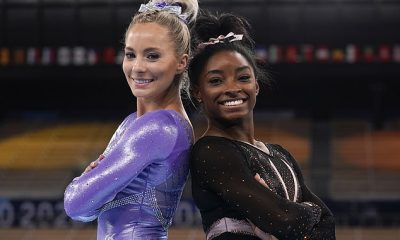
 Health3 weeks ago
Health3 weeks agoGymnast MyKayla Skinner Claims Simone Biles 'Belittled and Ostracized' Her amid Riley …
-

 Motorsports3 weeks ago
Motorsports3 weeks agoNASCAR Race Today: Mexico City start times, schedule and how to watch live on TV
-

 Motorsports3 weeks ago
Motorsports3 weeks agoNASCAR in Mexico City: Where to watch, start time, stream, lineup, race preview for inaugural Viva Mexico 250
-

 College Sports1 week ago
College Sports1 week agoWAC to Rebrand to UAC, Add Five New Members in 2026
-

 High School Sports3 weeks ago
High School Sports3 weeks agoNew Bedford top stories
-

 College Sports3 weeks ago
College Sports3 weeks agoLivvy Dunne honors boyfriend Paul Skenes with twist on LSU jersey
-

 Health3 weeks ago
Health3 weeks agoKyrie Irving's Strong Message Amid Men's Mental Health Awareness Month
-

 Health3 weeks ago
Health3 weeks agoChicago Sky receive unfortunate reaction to 'mental health' statement with Angel Reese
-
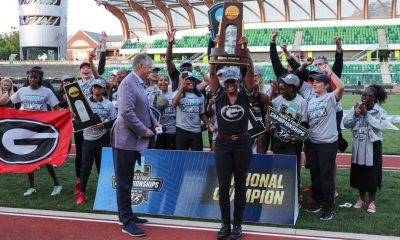
 Sports3 weeks ago
Sports3 weeks agoGeorgia women soar to first outdoor track championship
-

 Technology2 weeks ago
Technology2 weeks agoPolar is teasing a Whoop alternative without subscription











 (via @FloridaFishingIF/TT)
(via @FloridaFishingIF/TT)























